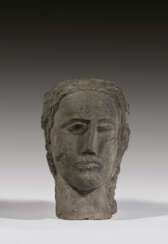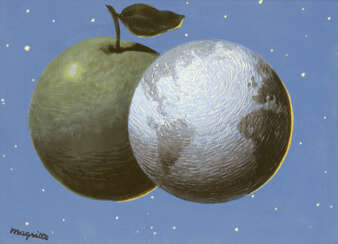jan dörre (1967)
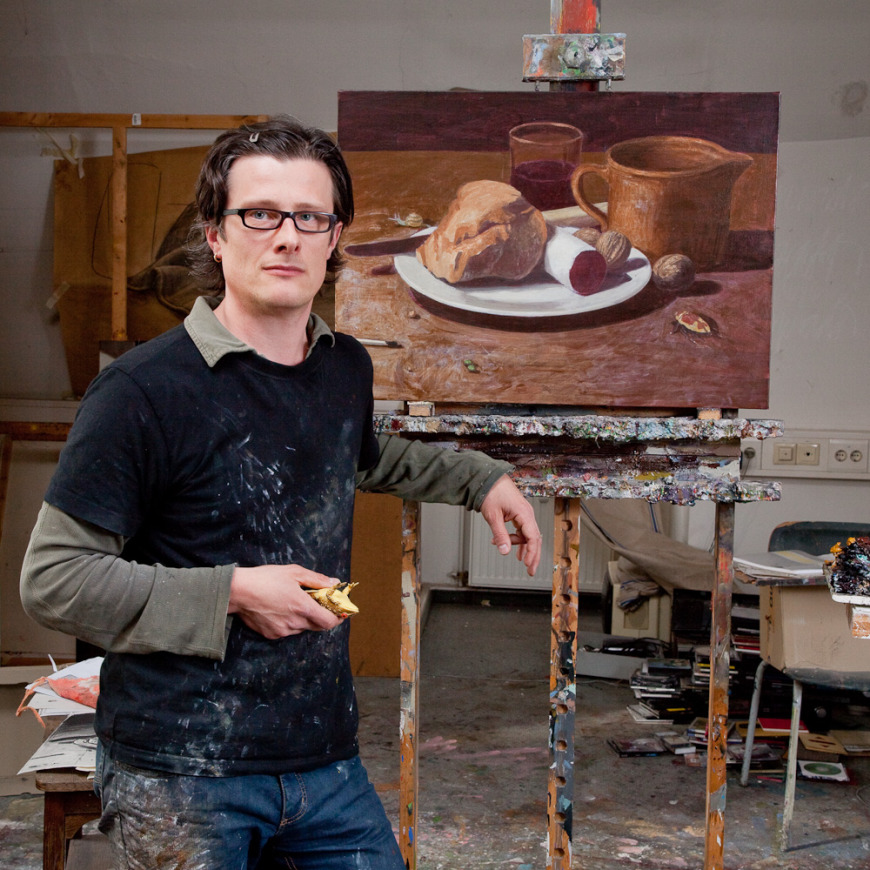
Jan Dörre is a German painter known for his still lifes in the modern vanitas style.
He studied painting at the Academy of Visual Arts in Leipzig, lives and works in Leipzig.
Jan Dörre paints still lifes, which are directly associated with the paintings of the old masters of the 17th century. The artist in his works repeats in different variations the familiar set of motifs found in baroque still lifes of vanitas: bread, cutlery, fruit, insects, birds, snakes, lizards, books, letters, skull, etc. But next to them in a modern setting he places objects of our time, for example, pills and empty packages from them. All this together conveys the general idea of the genre: a reminder of the transience of life, the futility of pleasure and the inevitability of death.


Jan Dörre is a German painter known for his still lifes in the modern vanitas style.
He studied painting at the Academy of Visual Arts in Leipzig, lives and works in Leipzig.
Jan Dörre paints still lifes, which are directly associated with the paintings of the old masters of the 17th century. The artist in his works repeats in different variations the familiar set of motifs found in baroque still lifes of vanitas: bread, cutlery, fruit, insects, birds, snakes, lizards, books, letters, skull, etc. But next to them in a modern setting he places objects of our time, for example, pills and empty packages from them. All this together conveys the general idea of the genre: a reminder of the transience of life, the futility of pleasure and the inevitability of death.
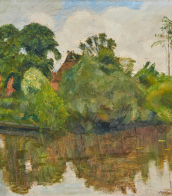

Jan Dörre is a German painter known for his still lifes in the modern vanitas style.
He studied painting at the Academy of Visual Arts in Leipzig, lives and works in Leipzig.
Jan Dörre paints still lifes, which are directly associated with the paintings of the old masters of the 17th century. The artist in his works repeats in different variations the familiar set of motifs found in baroque still lifes of vanitas: bread, cutlery, fruit, insects, birds, snakes, lizards, books, letters, skull, etc. But next to them in a modern setting he places objects of our time, for example, pills and empty packages from them. All this together conveys the general idea of the genre: a reminder of the transience of life, the futility of pleasure and the inevitability of death.


Jan Dörre is a German painter known for his still lifes in the modern vanitas style.
He studied painting at the Academy of Visual Arts in Leipzig, lives and works in Leipzig.
Jan Dörre paints still lifes, which are directly associated with the paintings of the old masters of the 17th century. The artist in his works repeats in different variations the familiar set of motifs found in baroque still lifes of vanitas: bread, cutlery, fruit, insects, birds, snakes, lizards, books, letters, skull, etc. But next to them in a modern setting he places objects of our time, for example, pills and empty packages from them. All this together conveys the general idea of the genre: a reminder of the transience of life, the futility of pleasure and the inevitability of death.
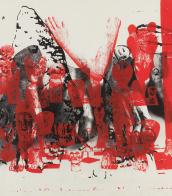

Jan Dörre is a German painter known for his still lifes in the modern vanitas style.
He studied painting at the Academy of Visual Arts in Leipzig, lives and works in Leipzig.
Jan Dörre paints still lifes, which are directly associated with the paintings of the old masters of the 17th century. The artist in his works repeats in different variations the familiar set of motifs found in baroque still lifes of vanitas: bread, cutlery, fruit, insects, birds, snakes, lizards, books, letters, skull, etc. But next to them in a modern setting he places objects of our time, for example, pills and empty packages from them. All this together conveys the general idea of the genre: a reminder of the transience of life, the futility of pleasure and the inevitability of death.


Jan Dörre is a German painter known for his still lifes in the modern vanitas style.
He studied painting at the Academy of Visual Arts in Leipzig, lives and works in Leipzig.
Jan Dörre paints still lifes, which are directly associated with the paintings of the old masters of the 17th century. The artist in his works repeats in different variations the familiar set of motifs found in baroque still lifes of vanitas: bread, cutlery, fruit, insects, birds, snakes, lizards, books, letters, skull, etc. But next to them in a modern setting he places objects of our time, for example, pills and empty packages from them. All this together conveys the general idea of the genre: a reminder of the transience of life, the futility of pleasure and the inevitability of death.


Jan Dörre is a German painter known for his still lifes in the modern vanitas style.
He studied painting at the Academy of Visual Arts in Leipzig, lives and works in Leipzig.
Jan Dörre paints still lifes, which are directly associated with the paintings of the old masters of the 17th century. The artist in his works repeats in different variations the familiar set of motifs found in baroque still lifes of vanitas: bread, cutlery, fruit, insects, birds, snakes, lizards, books, letters, skull, etc. But next to them in a modern setting he places objects of our time, for example, pills and empty packages from them. All this together conveys the general idea of the genre: a reminder of the transience of life, the futility of pleasure and the inevitability of death.
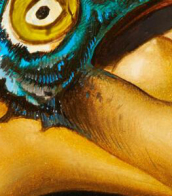

Jan Dörre is a German painter known for his still lifes in the modern vanitas style.
He studied painting at the Academy of Visual Arts in Leipzig, lives and works in Leipzig.
Jan Dörre paints still lifes, which are directly associated with the paintings of the old masters of the 17th century. The artist in his works repeats in different variations the familiar set of motifs found in baroque still lifes of vanitas: bread, cutlery, fruit, insects, birds, snakes, lizards, books, letters, skull, etc. But next to them in a modern setting he places objects of our time, for example, pills and empty packages from them. All this together conveys the general idea of the genre: a reminder of the transience of life, the futility of pleasure and the inevitability of death.


Jan Dörre is a German painter known for his still lifes in the modern vanitas style.
He studied painting at the Academy of Visual Arts in Leipzig, lives and works in Leipzig.
Jan Dörre paints still lifes, which are directly associated with the paintings of the old masters of the 17th century. The artist in his works repeats in different variations the familiar set of motifs found in baroque still lifes of vanitas: bread, cutlery, fruit, insects, birds, snakes, lizards, books, letters, skull, etc. But next to them in a modern setting he places objects of our time, for example, pills and empty packages from them. All this together conveys the general idea of the genre: a reminder of the transience of life, the futility of pleasure and the inevitability of death.


Jan Dörre is a German painter known for his still lifes in the modern vanitas style.
He studied painting at the Academy of Visual Arts in Leipzig, lives and works in Leipzig.
Jan Dörre paints still lifes, which are directly associated with the paintings of the old masters of the 17th century. The artist in his works repeats in different variations the familiar set of motifs found in baroque still lifes of vanitas: bread, cutlery, fruit, insects, birds, snakes, lizards, books, letters, skull, etc. But next to them in a modern setting he places objects of our time, for example, pills and empty packages from them. All this together conveys the general idea of the genre: a reminder of the transience of life, the futility of pleasure and the inevitability of death.


Jan Dörre is a German painter known for his still lifes in the modern vanitas style.
He studied painting at the Academy of Visual Arts in Leipzig, lives and works in Leipzig.
Jan Dörre paints still lifes, which are directly associated with the paintings of the old masters of the 17th century. The artist in his works repeats in different variations the familiar set of motifs found in baroque still lifes of vanitas: bread, cutlery, fruit, insects, birds, snakes, lizards, books, letters, skull, etc. But next to them in a modern setting he places objects of our time, for example, pills and empty packages from them. All this together conveys the general idea of the genre: a reminder of the transience of life, the futility of pleasure and the inevitability of death.


Jan Dörre is a German painter known for his still lifes in the modern vanitas style.
He studied painting at the Academy of Visual Arts in Leipzig, lives and works in Leipzig.
Jan Dörre paints still lifes, which are directly associated with the paintings of the old masters of the 17th century. The artist in his works repeats in different variations the familiar set of motifs found in baroque still lifes of vanitas: bread, cutlery, fruit, insects, birds, snakes, lizards, books, letters, skull, etc. But next to them in a modern setting he places objects of our time, for example, pills and empty packages from them. All this together conveys the general idea of the genre: a reminder of the transience of life, the futility of pleasure and the inevitability of death.


Jan Dörre is a German painter known for his still lifes in the modern vanitas style.
He studied painting at the Academy of Visual Arts in Leipzig, lives and works in Leipzig.
Jan Dörre paints still lifes, which are directly associated with the paintings of the old masters of the 17th century. The artist in his works repeats in different variations the familiar set of motifs found in baroque still lifes of vanitas: bread, cutlery, fruit, insects, birds, snakes, lizards, books, letters, skull, etc. But next to them in a modern setting he places objects of our time, for example, pills and empty packages from them. All this together conveys the general idea of the genre: a reminder of the transience of life, the futility of pleasure and the inevitability of death.

.jpg)
René Magritte, a Belgian artist, was renowned for his significant contributions to the Surrealist movement. His art, known for merging ordinary objects with bizarre, dream-like contexts, captivated the art world. Born on November 21, 1898, in Lessines, Belgium, Magritte's early artistic pursuits were impressionistic, transitioning through Cubism and Futurism influenced by artists like Jean Metzinger. However, his encounter with Giorgio de Chirico's work in 1922 steered him towards Surrealism.
Magritte's career was marked by various phases, each showcasing his evolving style and thematic focus. His initial foray into Surrealism began in 1926 with "The Lost Jockey" and was further solidified during his time in Paris, where he mingled with other prominent Surrealists like André Breton. Despite facing initial criticism and financial challenges, Magritte's unique blend of familiar imagery in unfamiliar contexts, like in "The Empire of Light" and "Time Transfixed," earned him acclaim.
Magritte's distinct visual language, characterized by recurring motifs like bowler hats and apples, and his exploration of reality and illusion, remain influential. His works are displayed in major galleries worldwide, continuing to inspire and intrigue art collectors and enthusiasts.
For collectors and experts in art and antiques, staying informed about Magritte's works and related auction events is crucial. Signing up for updates ensures you're alerted to new sales and events focusing on René Magritte's art, offering unique opportunities to acquire or learn more about his remarkable creations. This subscription will exclusively cover new product sales and auction events related to Magritte, keeping you updated on the most relevant information in the art world.

.jpg)
René Magritte, a Belgian artist, was renowned for his significant contributions to the Surrealist movement. His art, known for merging ordinary objects with bizarre, dream-like contexts, captivated the art world. Born on November 21, 1898, in Lessines, Belgium, Magritte's early artistic pursuits were impressionistic, transitioning through Cubism and Futurism influenced by artists like Jean Metzinger. However, his encounter with Giorgio de Chirico's work in 1922 steered him towards Surrealism.
Magritte's career was marked by various phases, each showcasing his evolving style and thematic focus. His initial foray into Surrealism began in 1926 with "The Lost Jockey" and was further solidified during his time in Paris, where he mingled with other prominent Surrealists like André Breton. Despite facing initial criticism and financial challenges, Magritte's unique blend of familiar imagery in unfamiliar contexts, like in "The Empire of Light" and "Time Transfixed," earned him acclaim.
Magritte's distinct visual language, characterized by recurring motifs like bowler hats and apples, and his exploration of reality and illusion, remain influential. His works are displayed in major galleries worldwide, continuing to inspire and intrigue art collectors and enthusiasts.
For collectors and experts in art and antiques, staying informed about Magritte's works and related auction events is crucial. Signing up for updates ensures you're alerted to new sales and events focusing on René Magritte's art, offering unique opportunities to acquire or learn more about his remarkable creations. This subscription will exclusively cover new product sales and auction events related to Magritte, keeping you updated on the most relevant information in the art world.
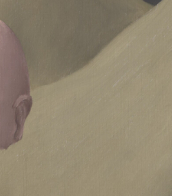
.jpg)
René Magritte, a Belgian artist, was renowned for his significant contributions to the Surrealist movement. His art, known for merging ordinary objects with bizarre, dream-like contexts, captivated the art world. Born on November 21, 1898, in Lessines, Belgium, Magritte's early artistic pursuits were impressionistic, transitioning through Cubism and Futurism influenced by artists like Jean Metzinger. However, his encounter with Giorgio de Chirico's work in 1922 steered him towards Surrealism.
Magritte's career was marked by various phases, each showcasing his evolving style and thematic focus. His initial foray into Surrealism began in 1926 with "The Lost Jockey" and was further solidified during his time in Paris, where he mingled with other prominent Surrealists like André Breton. Despite facing initial criticism and financial challenges, Magritte's unique blend of familiar imagery in unfamiliar contexts, like in "The Empire of Light" and "Time Transfixed," earned him acclaim.
Magritte's distinct visual language, characterized by recurring motifs like bowler hats and apples, and his exploration of reality and illusion, remain influential. His works are displayed in major galleries worldwide, continuing to inspire and intrigue art collectors and enthusiasts.
For collectors and experts in art and antiques, staying informed about Magritte's works and related auction events is crucial. Signing up for updates ensures you're alerted to new sales and events focusing on René Magritte's art, offering unique opportunities to acquire or learn more about his remarkable creations. This subscription will exclusively cover new product sales and auction events related to Magritte, keeping you updated on the most relevant information in the art world.

.jpg)
René Magritte, a Belgian artist, was renowned for his significant contributions to the Surrealist movement. His art, known for merging ordinary objects with bizarre, dream-like contexts, captivated the art world. Born on November 21, 1898, in Lessines, Belgium, Magritte's early artistic pursuits were impressionistic, transitioning through Cubism and Futurism influenced by artists like Jean Metzinger. However, his encounter with Giorgio de Chirico's work in 1922 steered him towards Surrealism.
Magritte's career was marked by various phases, each showcasing his evolving style and thematic focus. His initial foray into Surrealism began in 1926 with "The Lost Jockey" and was further solidified during his time in Paris, where he mingled with other prominent Surrealists like André Breton. Despite facing initial criticism and financial challenges, Magritte's unique blend of familiar imagery in unfamiliar contexts, like in "The Empire of Light" and "Time Transfixed," earned him acclaim.
Magritte's distinct visual language, characterized by recurring motifs like bowler hats and apples, and his exploration of reality and illusion, remain influential. His works are displayed in major galleries worldwide, continuing to inspire and intrigue art collectors and enthusiasts.
For collectors and experts in art and antiques, staying informed about Magritte's works and related auction events is crucial. Signing up for updates ensures you're alerted to new sales and events focusing on René Magritte's art, offering unique opportunities to acquire or learn more about his remarkable creations. This subscription will exclusively cover new product sales and auction events related to Magritte, keeping you updated on the most relevant information in the art world.

.jpg)
René Magritte, a Belgian artist, was renowned for his significant contributions to the Surrealist movement. His art, known for merging ordinary objects with bizarre, dream-like contexts, captivated the art world. Born on November 21, 1898, in Lessines, Belgium, Magritte's early artistic pursuits were impressionistic, transitioning through Cubism and Futurism influenced by artists like Jean Metzinger. However, his encounter with Giorgio de Chirico's work in 1922 steered him towards Surrealism.
Magritte's career was marked by various phases, each showcasing his evolving style and thematic focus. His initial foray into Surrealism began in 1926 with "The Lost Jockey" and was further solidified during his time in Paris, where he mingled with other prominent Surrealists like André Breton. Despite facing initial criticism and financial challenges, Magritte's unique blend of familiar imagery in unfamiliar contexts, like in "The Empire of Light" and "Time Transfixed," earned him acclaim.
Magritte's distinct visual language, characterized by recurring motifs like bowler hats and apples, and his exploration of reality and illusion, remain influential. His works are displayed in major galleries worldwide, continuing to inspire and intrigue art collectors and enthusiasts.
For collectors and experts in art and antiques, staying informed about Magritte's works and related auction events is crucial. Signing up for updates ensures you're alerted to new sales and events focusing on René Magritte's art, offering unique opportunities to acquire or learn more about his remarkable creations. This subscription will exclusively cover new product sales and auction events related to Magritte, keeping you updated on the most relevant information in the art world.

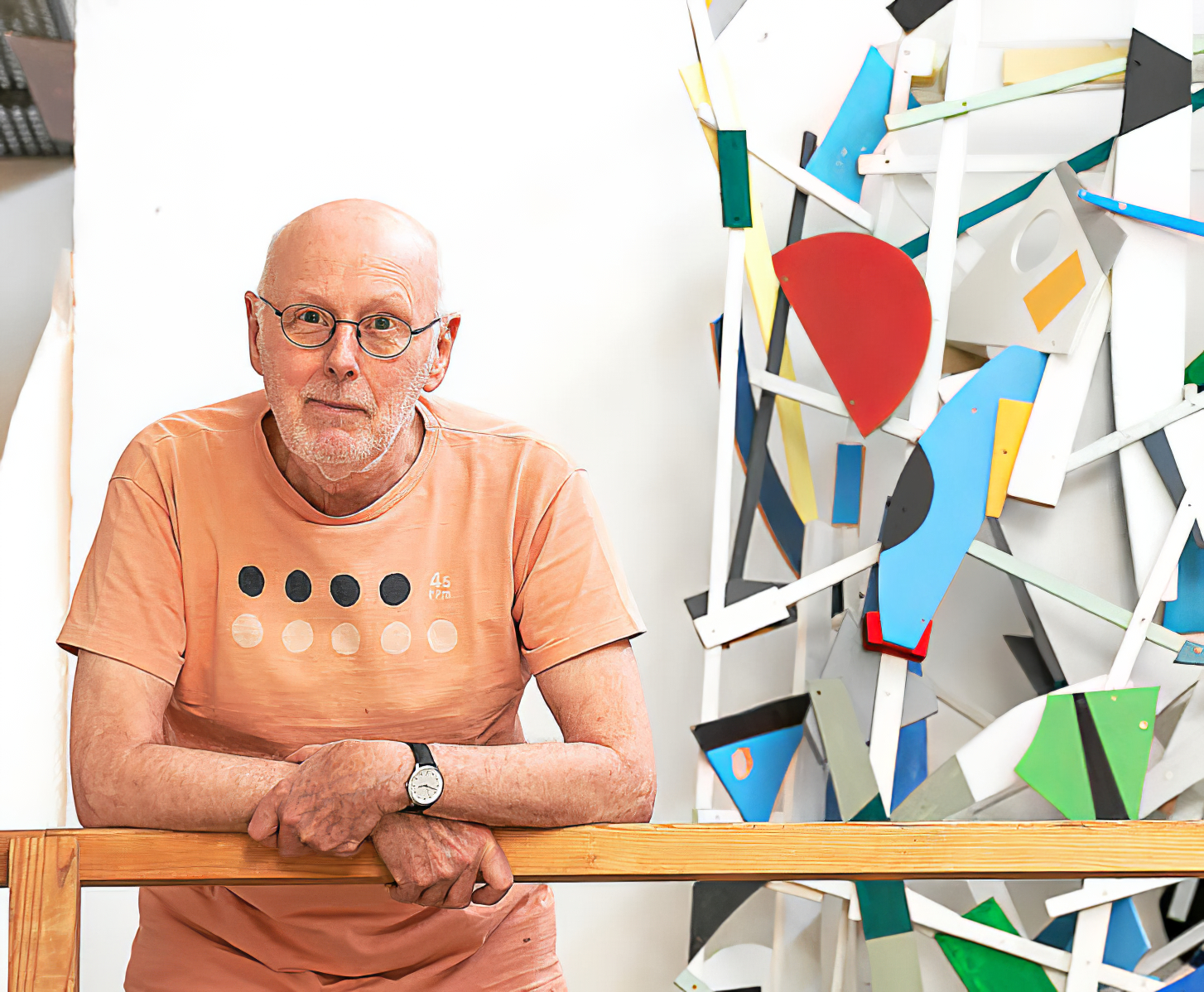
Jan Voss is a contemporary German painter, engraver, sculptor and graphic artist.
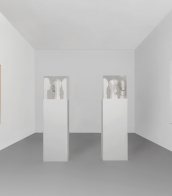
.jpg)
René Magritte, a Belgian artist, was renowned for his significant contributions to the Surrealist movement. His art, known for merging ordinary objects with bizarre, dream-like contexts, captivated the art world. Born on November 21, 1898, in Lessines, Belgium, Magritte's early artistic pursuits were impressionistic, transitioning through Cubism and Futurism influenced by artists like Jean Metzinger. However, his encounter with Giorgio de Chirico's work in 1922 steered him towards Surrealism.
Magritte's career was marked by various phases, each showcasing his evolving style and thematic focus. His initial foray into Surrealism began in 1926 with "The Lost Jockey" and was further solidified during his time in Paris, where he mingled with other prominent Surrealists like André Breton. Despite facing initial criticism and financial challenges, Magritte's unique blend of familiar imagery in unfamiliar contexts, like in "The Empire of Light" and "Time Transfixed," earned him acclaim.
Magritte's distinct visual language, characterized by recurring motifs like bowler hats and apples, and his exploration of reality and illusion, remain influential. His works are displayed in major galleries worldwide, continuing to inspire and intrigue art collectors and enthusiasts.
For collectors and experts in art and antiques, staying informed about Magritte's works and related auction events is crucial. Signing up for updates ensures you're alerted to new sales and events focusing on René Magritte's art, offering unique opportunities to acquire or learn more about his remarkable creations. This subscription will exclusively cover new product sales and auction events related to Magritte, keeping you updated on the most relevant information in the art world.

.jpg)
René Magritte, a Belgian artist, was renowned for his significant contributions to the Surrealist movement. His art, known for merging ordinary objects with bizarre, dream-like contexts, captivated the art world. Born on November 21, 1898, in Lessines, Belgium, Magritte's early artistic pursuits were impressionistic, transitioning through Cubism and Futurism influenced by artists like Jean Metzinger. However, his encounter with Giorgio de Chirico's work in 1922 steered him towards Surrealism.
Magritte's career was marked by various phases, each showcasing his evolving style and thematic focus. His initial foray into Surrealism began in 1926 with "The Lost Jockey" and was further solidified during his time in Paris, where he mingled with other prominent Surrealists like André Breton. Despite facing initial criticism and financial challenges, Magritte's unique blend of familiar imagery in unfamiliar contexts, like in "The Empire of Light" and "Time Transfixed," earned him acclaim.
Magritte's distinct visual language, characterized by recurring motifs like bowler hats and apples, and his exploration of reality and illusion, remain influential. His works are displayed in major galleries worldwide, continuing to inspire and intrigue art collectors and enthusiasts.
For collectors and experts in art and antiques, staying informed about Magritte's works and related auction events is crucial. Signing up for updates ensures you're alerted to new sales and events focusing on René Magritte's art, offering unique opportunities to acquire or learn more about his remarkable creations. This subscription will exclusively cover new product sales and auction events related to Magritte, keeping you updated on the most relevant information in the art world.

.jpg)
René Magritte, a Belgian artist, was renowned for his significant contributions to the Surrealist movement. His art, known for merging ordinary objects with bizarre, dream-like contexts, captivated the art world. Born on November 21, 1898, in Lessines, Belgium, Magritte's early artistic pursuits were impressionistic, transitioning through Cubism and Futurism influenced by artists like Jean Metzinger. However, his encounter with Giorgio de Chirico's work in 1922 steered him towards Surrealism.
Magritte's career was marked by various phases, each showcasing his evolving style and thematic focus. His initial foray into Surrealism began in 1926 with "The Lost Jockey" and was further solidified during his time in Paris, where he mingled with other prominent Surrealists like André Breton. Despite facing initial criticism and financial challenges, Magritte's unique blend of familiar imagery in unfamiliar contexts, like in "The Empire of Light" and "Time Transfixed," earned him acclaim.
Magritte's distinct visual language, characterized by recurring motifs like bowler hats and apples, and his exploration of reality and illusion, remain influential. His works are displayed in major galleries worldwide, continuing to inspire and intrigue art collectors and enthusiasts.
For collectors and experts in art and antiques, staying informed about Magritte's works and related auction events is crucial. Signing up for updates ensures you're alerted to new sales and events focusing on René Magritte's art, offering unique opportunities to acquire or learn more about his remarkable creations. This subscription will exclusively cover new product sales and auction events related to Magritte, keeping you updated on the most relevant information in the art world.

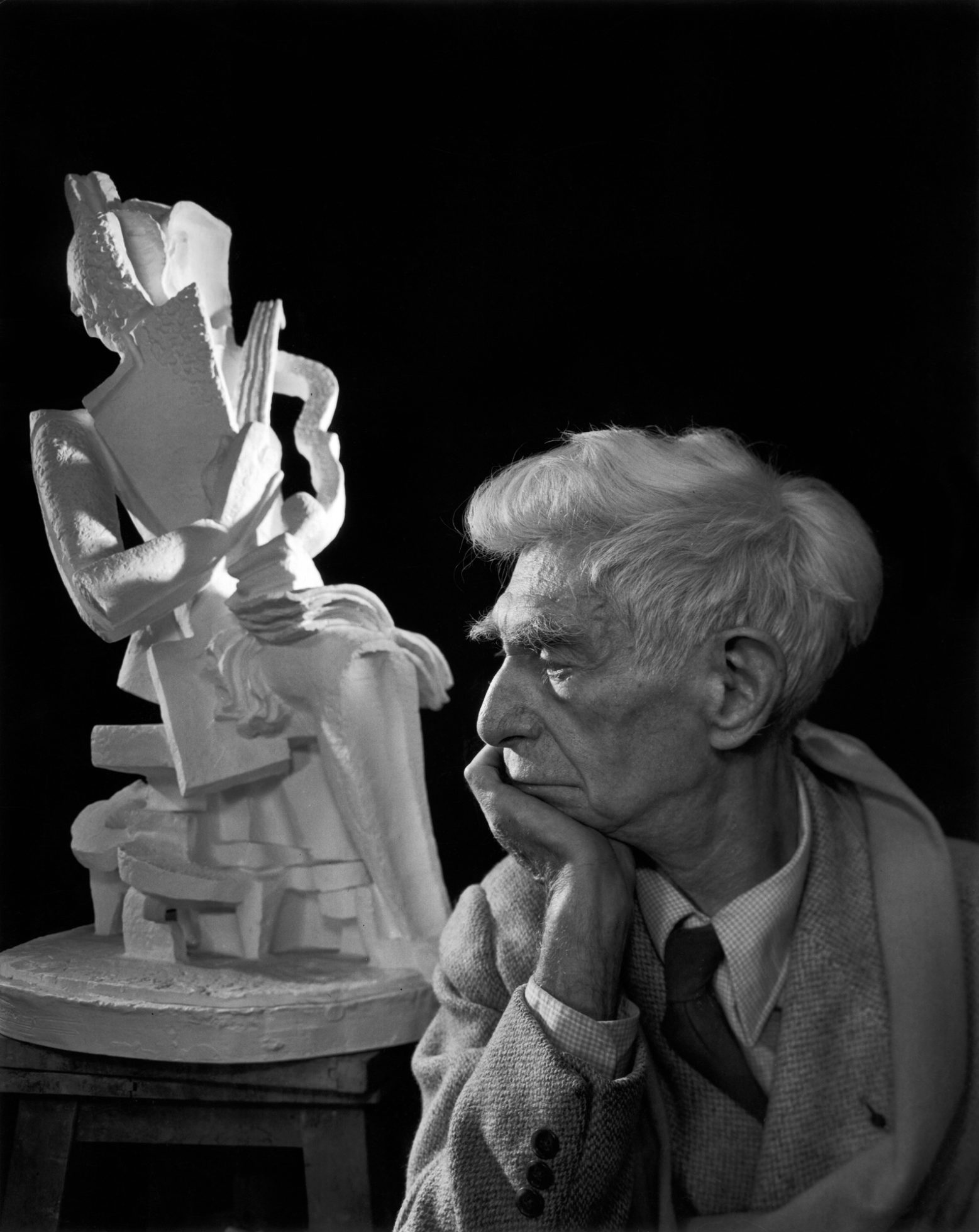
Ossip Zadkine was a Belarusian-born French artist. He is best known as a sculptor, but also produced paintings and lithographs.


Gustave Miklos was a sculptor, painter, illustrator and designer of Hungarian origin. An influential sculptor involved with Cubism and early developments in Art Deco, Miklos exhibited at the Salon d'Automne and the Salon des Indépendants during the 1910s and 1920s, and in 1925 showed at the International Exposition of Modern Industrial and Decorative Arts; the exhibition from which the term "Art Deco" was derived. He became a naturalized French citizen in 1922, and a member of The French Union of Modern Artists (UAM) in 1930. In addition to his painting and sculptural works, Miklos illustrated over thirty books, designed close to 200 bookbindings, numerous posters, in addition to furniture designs.
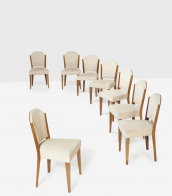
.jpg)
René Magritte, a Belgian artist, was renowned for his significant contributions to the Surrealist movement. His art, known for merging ordinary objects with bizarre, dream-like contexts, captivated the art world. Born on November 21, 1898, in Lessines, Belgium, Magritte's early artistic pursuits were impressionistic, transitioning through Cubism and Futurism influenced by artists like Jean Metzinger. However, his encounter with Giorgio de Chirico's work in 1922 steered him towards Surrealism.
Magritte's career was marked by various phases, each showcasing his evolving style and thematic focus. His initial foray into Surrealism began in 1926 with "The Lost Jockey" and was further solidified during his time in Paris, where he mingled with other prominent Surrealists like André Breton. Despite facing initial criticism and financial challenges, Magritte's unique blend of familiar imagery in unfamiliar contexts, like in "The Empire of Light" and "Time Transfixed," earned him acclaim.
Magritte's distinct visual language, characterized by recurring motifs like bowler hats and apples, and his exploration of reality and illusion, remain influential. His works are displayed in major galleries worldwide, continuing to inspire and intrigue art collectors and enthusiasts.
For collectors and experts in art and antiques, staying informed about Magritte's works and related auction events is crucial. Signing up for updates ensures you're alerted to new sales and events focusing on René Magritte's art, offering unique opportunities to acquire or learn more about his remarkable creations. This subscription will exclusively cover new product sales and auction events related to Magritte, keeping you updated on the most relevant information in the art world.

.jpg)
René Magritte, a Belgian artist, was renowned for his significant contributions to the Surrealist movement. His art, known for merging ordinary objects with bizarre, dream-like contexts, captivated the art world. Born on November 21, 1898, in Lessines, Belgium, Magritte's early artistic pursuits were impressionistic, transitioning through Cubism and Futurism influenced by artists like Jean Metzinger. However, his encounter with Giorgio de Chirico's work in 1922 steered him towards Surrealism.
Magritte's career was marked by various phases, each showcasing his evolving style and thematic focus. His initial foray into Surrealism began in 1926 with "The Lost Jockey" and was further solidified during his time in Paris, where he mingled with other prominent Surrealists like André Breton. Despite facing initial criticism and financial challenges, Magritte's unique blend of familiar imagery in unfamiliar contexts, like in "The Empire of Light" and "Time Transfixed," earned him acclaim.
Magritte's distinct visual language, characterized by recurring motifs like bowler hats and apples, and his exploration of reality and illusion, remain influential. His works are displayed in major galleries worldwide, continuing to inspire and intrigue art collectors and enthusiasts.
For collectors and experts in art and antiques, staying informed about Magritte's works and related auction events is crucial. Signing up for updates ensures you're alerted to new sales and events focusing on René Magritte's art, offering unique opportunities to acquire or learn more about his remarkable creations. This subscription will exclusively cover new product sales and auction events related to Magritte, keeping you updated on the most relevant information in the art world.

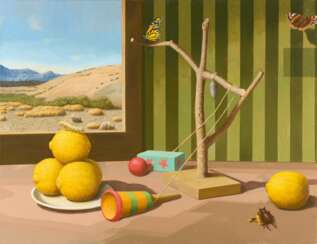

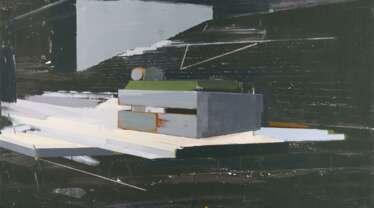



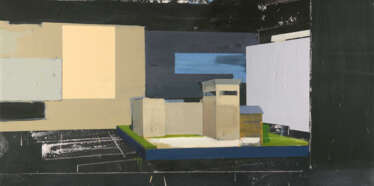

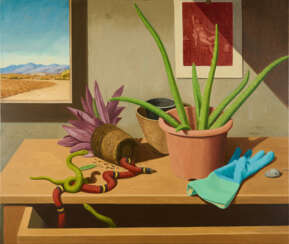

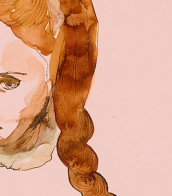
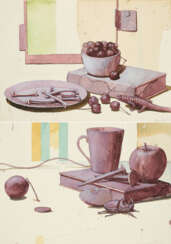

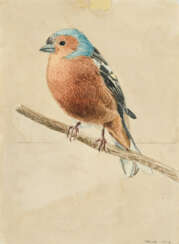

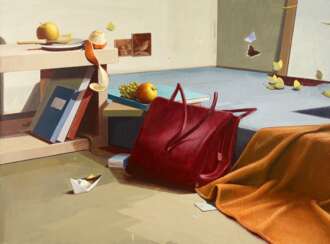

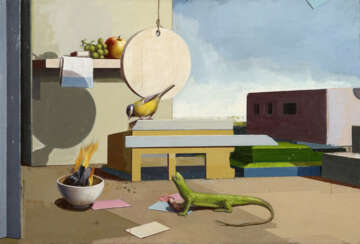

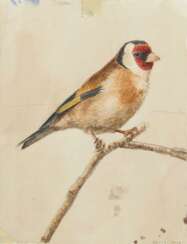

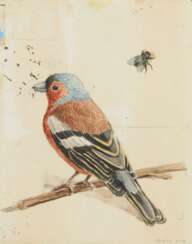

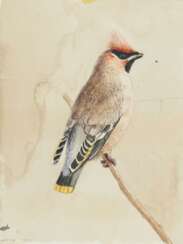

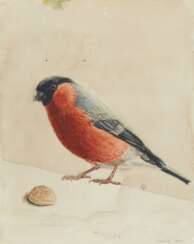

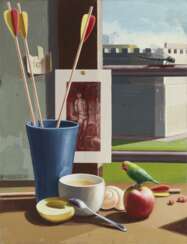

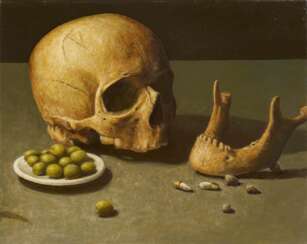



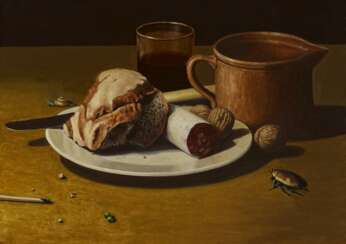

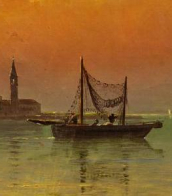
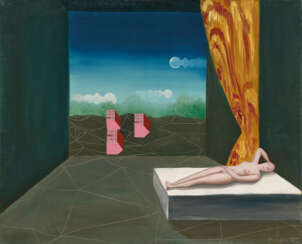

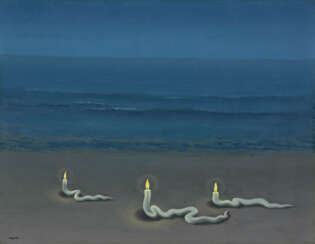

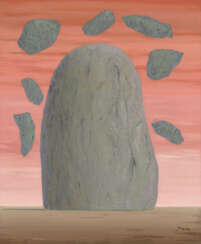

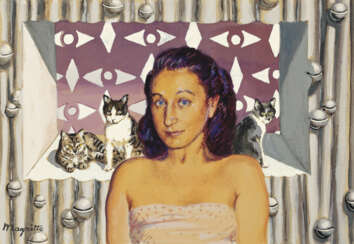

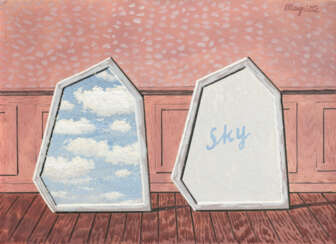

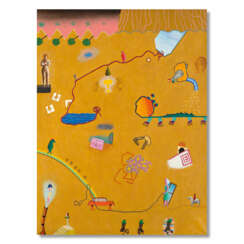

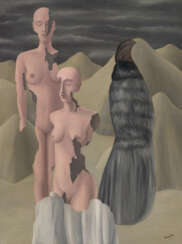

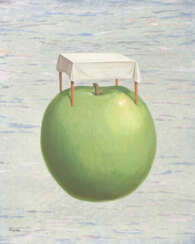

![[MAGRITTE, René (1898-1967)]](/assets/image/picture_4258112/b0d12/c42714d5f738dc1854c773639e4d54a81729065600jpg__fix_374_244.jpeg)
![[MAGRITTE, René (1898-1967)]](https://veryimportantlot.com/assets/image/picture_4258112/b0d12/c42714d5f738dc1854c773639e4d54a81729065600jpg__fix_374_244.jpeg)
